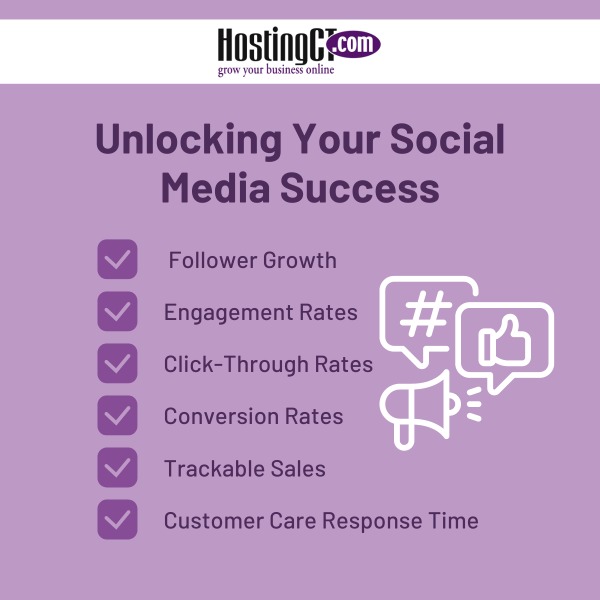Measuring Your Social Media Success Metrics and IndicatorsMar182024

With social media playing a central role in marketing strategies today, having the right analytics and metrics in place is crucial. But determining what success looks like on social media and how to track it can be a challenge. In this article, we’ll break down the key performance indicators (KPIs) and metrics brands should focus on to measure the impact of their social media marketing efforts.
Vanity Growth is Not Engagement
While vanity metrics like follower counts were once the main way brands tracked social media, engagement rates are now prioritized over sheer numbers. Still, a healthy follower growth rate on networks like Facebook, Instagram, Twitter and LinkedIn signals you’re reaching new audiences.
Aim for an average monthly follower growth rate between 2-3%. If rates dip below 2% for long, it likely means your content isn’t resonating or you need to expand into new communities.
Does Your Audience Interact?
Engagement rate measures the level of interaction your content gets through actions like shares, comments and likes. To calculate it, divide total engagements by your number of followers.
Benchmark engagement rates vary by platform and industry, but a good starting goal is to aim for over 1% on Facebook and above 2% on Instagram. If your rate falls below 0.5% on a consistent basis, evaluating content formats and topics is advised.
Click-Through Rates
Click-through rate (CTR) for social media posts with links measures how many people actually click compared to how many viewed it. To find it, divide clicks by total impressions.
CTR averages for social posts range from around 0.5% on Twitter to 2.5% on LinkedIn. You’ll want to aim for at least 1-2% CTR consistently. If rates drop lower, tweaking your headline wording or link preview images could help improve performance.
Conversion Rates
While engagement metrics show interest and interaction, you ultimately want social media to help drive conversions like sales, leads and sign-ups. Conversion rate is the percentage of site visitors from social that complete your desired action.
To calculate it, divide the number that converted by total visitors from social channels. Aim for conversion rates of at least 1-2% from your social traffic. If it’s lower than 1%, further website optimization may be needed to remove friction in the buying process.
Are Your Sales Trackable?
For ecommerce brands, track the revenue generated that’s directly attributed to your social channels using UTM campaign tags and analytics. Initial benchmarks could be aiming for social traffic to account for 10-15% of total monthly sales.
There are also attribution models in analytics platforms like Google Analytics to see which channels and touchpoints influence conversions. This helps fully quantify social’s contribution to pipeline and revenue.
Is Your Brand Discussed?
Social media monitoring tools can analyze the sentiment around your brand mentions to see if they carry positive, negative or neutral tones. Aim for at least 60-70% of mentions to be positive or neutral as a benchmark.
If you see spikes in negative sentiment, it likely indicates customer service problems or reaction to a brand crisis that need addressing. Sentiment analysis allows you to quickly spot negative trends.
Social Customer Care Response Time
If you handle customer service inquiries via social media, track your average response time. Industry benchmarks show the firsts response within one hour as optimal. Anything longer than a few hours can negatively impact customer satisfaction and brand reputation.
Prioritizing fast response times and having the right tools and resources to manage customer service inquiries on social media is vital. Speedy issue resolution will be noticed and appreciated.
What are Your Next Steps?
Measuring social media performance goes well beyond vanity metrics to provide a multi-dimensional view of impact and value generated for your brand. Consistently tracking KPIs like engagement, conversions, sentiment and sales impact is crucial.
However, collecting this data is only the first step. The key is to actively analyze results and trends to optimize your social strategy on an ongoing basis. Comparing performance across platforms, demographics and content types allows you to double down on what works.
If tackling social media analytics seems overwhelming, our team at HostingCT can help. Our social media experts can not only track and report on your brand's key social KPIs, but provide strategic recommendations to improve them. Reach out today to learn more about our managed social media services.
Return



